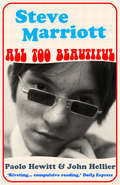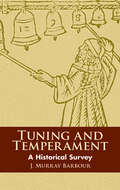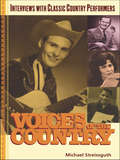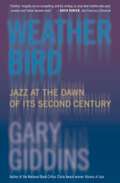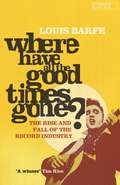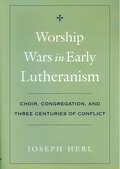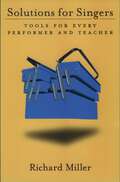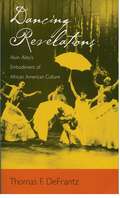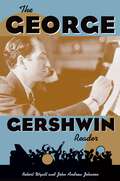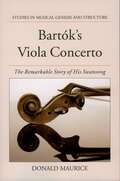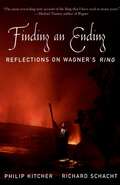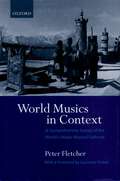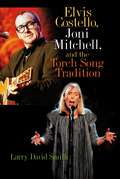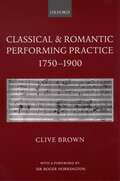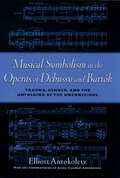- Table View
- List View
Steve Marriott: All Too Beautiful
by Paolo HewittSteve Marriott was one of the music world's most extraordinary individuals, A supremely gifted songwriter, singer and … schemer. A vocalist from the same mould as Rod Stewart, Eric Burdon and Steve Winwood … but arguably the greatest white soul singer of them all. Marriott never held back from anything, least of all his music, his vocals always possessed an intensity, clarity and maturity that at the time were unmatched by any other singer.His band The Small Faces were the first to be banned from Top of The Pops and were deported from Australia at gunpoint. Steve's next group Humble Pie ruled the stadiums of America but the money earned was diverted by mafia associates and he returned to the UK broke and on the run from the Taxman. In later life he struggled with schizophrenia but always continued playing - blistering gigs in front of small audiences in the pubs and clubs around London. Recently reunited with his old Humble Pie sparring partner Peter Frampton, he was on the verge of a comeback when he was tragically killed in a housefire, aged 44-years-old. A huge influence on a new generation of musicians from Paul Weller to Noel Gallagher, due to his death, Marriott has perhaps not been granted the status in Rock 'n' Roll's pantheon that he deserved. A major reassessment is long overdue. Marriott was simply one of the greatest rock stars of all time.“An exhaustive account of the East End musical maverick, it spans his beginnings as a child prodigy, his memorable work with arch top Mods the Small Faces, and all the way through to his later work with Humble Pie, his subsequent solo career and untimely death in 1991.” Gary Crowley“A riveting account of the singer’s life, crammed with entertaining stories ofrebellion and debauchery and insightful historical background… Compulsivereading.” The Daily Express“One of the best books I’ve read about the backwaters of rock music.” The Daily Mail“A wonderfully researched, eminently readable appreciation of the creative force behind the Small Faces and Humble Pie, who created some of the finest pop, rock ’n’ boogie music of his generation.” ***** Classic Rock“All Too Beautiful traces Marriott’s mercurial career from his upbringing in postwar, bomb-damaged London to his cocaine-ravaged demise in a fire at his Essex home in 1991, aged 44. Revealing… sympathetic, long overdue.” **** Uncut“Ultimately, this is a complex story of extraordinary talent, missed chances, exotic highs and frightening lows… This comprehensive biography of Steve Marriott is as close as we’re going to get to extracting the truth about Britain’s finest white-soul exponent.” ***** Record Collector“Compelling reading.” **** Mojo
Stradivarius: Five Violins, One Cello and a Genius
by Toby FaberEveryone knows of the legendary quality and unbelievable price tag of a Stradivarius violin. In this, the first popular account of the Stradivari phenomena, Toby Faber explores the life and methods of this unsurpassed craftsman. Following the life of his instruments as they pass through the hands of many of the greatest musicians that have ever lived, we learn how and why they have become objects of such veneration and desire. It is a dramatic tale of grand artistry, fantastic music, shady dealers, forgery and science. 'Fascinating, accessible and enjoyable' - Tracy Chevalier 'A captivating book . . . An extraordinary accomplishment and a compelling read' - TE Cahart, author of The Piano Shop On The Left Bank 'An inspired idea for a book' - Telegraph 'Faber has found in the Strad a delightful leitmotif for an original comedie humaine' - Financial Times 'Faber pitches the story just right, neither patronising nor baffling the reader' - Times
Too Much Too Young: Popular Music Age and Gender
by Sheila WhiteleyToo Much Too Young investigates how age and gender have shaped the careers and images of pop music stars, examining the role of youth and youthfulness in pop music through a series of themed case studies. Whiteley begins by investigating the exploitation of child stars such as Brenda Lee and Michael Jackson, offering a psychoanalytic reading of the relationship between child star and oppressive manager, and looks at the current glut of boy- and girl- bands and stars in the mold of Britney Spears to examine the continuing fatal attraction of stardom for adolescents. Whiteley then considers the star images of female singer-songwriters Kate Bush, Tori Amos, and Bjork, whose 'little girl' voices and characterization by the media suggests a girlish feminitity which is often at odds with the intentions of their musical output. She then moves on to explore the rock/pop divide as it affects the image of male performers, considering why male stars usually fall into the category of 'wild boys' such as Kurt Cobain or Jim Morrison, or 'nice boys', like Cliff Richard, The Monkees, and Wham! Whiteley ends by asking what happens to stars who set so much store by manipulations of youthfulness when they begin to age, and points to stars like Robbie Williams, Kylie Minogue and Cher to demonstrate that it is possible to achieve iconic pop status even without dying young.
Too Much Too Young: Popular Music Age and Gender
by Sheila WhiteleyToo Much Too Young investigates how age and gender have shaped the careers and images of pop music stars, examining the role of youth and youthfulness in pop music through a series of themed case studies. Whiteley begins by investigating the exploitation of child stars such as Brenda Lee and Michael Jackson, offering a psychoanalytic reading of the relationship between child star and oppressive manager, and looks at the current glut of boy- and girl- bands and stars in the mold of Britney Spears to examine the continuing fatal attraction of stardom for adolescents. Whiteley then considers the star images of female singer-songwriters Kate Bush, Tori Amos, and Bjork, whose 'little girl' voices and characterization by the media suggests a girlish feminitity which is often at odds with the intentions of their musical output. She then moves on to explore the rock/pop divide as it affects the image of male performers, considering why male stars usually fall into the category of 'wild boys' such as Kurt Cobain or Jim Morrison, or 'nice boys', like Cliff Richard, The Monkees, and Wham! Whiteley ends by asking what happens to stars who set so much store by manipulations of youthfulness when they begin to age, and points to stars like Robbie Williams, Kylie Minogue and Cher to demonstrate that it is possible to achieve iconic pop status even without dying young.
Tuning and Temperament: A Historical Survey
by J. Murray BarbourThe demands of tuning (attaining the perfect scale) and temperament (the compromises necessary for composing in every key) have challenged musicians from the earliest civilizations onward. This guide surveys these longstanding problems, devoting a chapter to each principal theory and offering a running account of the complete history of tuning and temperament. Organized chronologically, the book features a helpful glossary and numerous illustrative tables, and it requires minimal background in music theory. This new reissue is currently the only edition in print of a much-quoted classic. 9 figures. 180 tables.
Voices of the Country: Interviews with Classic Country Performers
by Michael Streissguth"Voices of the Country" presents interviews with innovative musicians, producers, and songwriters who shaped the last fifty years of country music. From Eddy Arnold's new, smoother approach to song delivery to Loretta Lynn's take-no-prisoners feminism, these people opened new vistas in country music - and American culture. Streissguth is a sensitive and knowledgeable interviewer: he gets beyond the standard publicity tales to the heart of the real voice - and real experiences - of these important figures.
Voices of the Country: Interviews with Classic Country Performers
by Michael Streissguth"Voices of the Country" presents interviews with innovative musicians, producers, and songwriters who shaped the last fifty years of country music. From Eddy Arnold's new, smoother approach to song delivery to Loretta Lynn's take-no-prisoners feminism, these people opened new vistas in country music - and American culture. Streissguth is a sensitive and knowledgeable interviewer: he gets beyond the standard publicity tales to the heart of the real voice - and real experiences - of these important figures.
Weather Bird: Jazz at the Dawn of Its Second Century
by Gary GiddinsGary Giddins's Weather Bird is a brilliant companion volume to his landmark in music criticism, Visions of Jazz, winner of the National Book Critics Circle Award in Criticism. More then 140 pieces, written over a 14-year period, are brought together for the first time in this superb collection of essays, reviews, and articles. Weather Bird is a celebration of jazz, with illuminating commentaryon contemporary jazz events, today's top muscicians, the best records of the year, and on leading figures from jazz's past. Readers will find extended pieces on Louis Armstrong, Erroll Garner, Benny Carter, Sonny Rollins, Dave Brubeck, Ornette Coleman, Billie Holiday, Cassandra Wilson, Tony Bennett, and many others. Giddins includes a series of articles on the annual JVC Jazz Festival, which offers a splendid overview of jazz in the 1990s. Other highlights include an astute look at avant-garde music ("Parajazz") and his challenging essay, "How Come Jazz Isn't Dead?" which advances a theory about the way art is born, exploited, celebrated, and sidelined to the museum. A radiant compendium by America's leading music critic, Weather Bird offers an unforgettable look at the modern jazz scene.
Where Have All the Good Times Gone?: The Rise And Fall Of The Record Industry
by Louis BarfeLouis Barfe's elegantly written, authoritative and highly entertaining history charts the meteoric rise and slow decline of the popular recording industry. Barfe shows how the 1920s and 1930s saw the departure of Edison from the phonograph business he created and the birth of EMI and CBS. In the years after the war, these companies, and the buccaneers, hucksters, impresarios and con-men who ran them, reaped stupendous commercial benefits with the arrival of Elvis Presley, who changed popular music (and sales of popular music) overnight. After Presley came the Beatles, when the recording industry became global and record sales reached all time highs. Where Have All The Good Times Gone? also charts the decline from that high-point a generation ago. The 1990s ushered in a period of profound crisis and uncertainty in the industry, encapsulated in one word: Napster. Barfe shows how the almost infinite amounts of free music available online have traumatic and disastrous consequences for an industry that has become cautious and undynamic.
Worship Wars in Early Lutheranism: Choir, Congregation, and Three Centuries of Conflict
by Joseph HerlHow important was music to Martin Luther? Drawing on hundreds of liturgical documents, contemporary accounts of services, books on church music, and other sources, Joseph Herl rewrites the history of music and congregational song in German Lutheran churches. Herl traces the path of music and congregational song in the Lutheran church from the Reformation to 1800, to show how it acquired its reputation as the "singing church." In the centuries after its founding, in a debate that was to have a strong impact on Johann Sebastian Bach and his contemporaries, the Lutheran church was torn over a new style of church music that many found more entertaining than devotional. By the end of the eighteenth century, Lutherans were trying to hold their own against a new secularism, and many members of the clergy favored wholesale revision or even abandonment of the historic liturgy in order to make worship more relevant in contemporary society. Herl paints a vivid picture of these developments, using as a backdrop the gradual transition from a choral to a congregational liturgy. The author eschews the usual analyses of musical repertoire and deals instead with events, people and ideas, drawing readers inside the story and helping them sense what it must have been like to attend a Lutheran church in the sixteenth through eighteenth centuries. Parallel developments in Catholic churches are discussed, as are the rise of organ accompaniment of hymns and questions of musical performance practice. Although written with academic precision, the writing is clear and comprehensible to the nonspecialist, and entertaining anecdotes abound. Appendixes include translations of several important historical documents and a set of tables outlining the Lutheran mass as presented in 172 different liturgical orders. The bibliography includes 400 Lutheran church orders and reports of ecclesiastical visitations read by the author.
Solutions for Singers: Tools for Performers and Teachers
by Richard MillerWhile many texts and courses on the art of singing offer comprehensive overviews of technique and performance, few have time to delve into the specific questions they spawn. Solutions for Singers explores these unanswered questions, filling in gaps that professional performers, students of singing, and voice teachers have long sought to close. Fielding over 200 questions, distinguished teacher and performer Richard Miller tackles problems raised during hundreds of his master classes and pedagogy courses. He deliberately avoids abstract generalities, concentrating instead on specific, recurring questions: What are some good exercises to loosen or relax tension in the back of the tongue? Do you apply the same principles regarding breathing to a younger student that you do to older students? What is meant by voiced and unvoiced consonants? Is there a female falsetto? Through such specialized questions, Miller probes the very essence of artistic expression. The questions are organized under ten broad topics, which Miller considers from various angles. He couples traditional and modern philosophies to present the most relevant and precise solutions. The result is an invaluable handbook for singers, which, read either sequentially or selectively, provides a unique and pragmatic approach to vocal artistry and technique.
Dancing Revelations: Alvin Ailey's Embodiment of African American Culture
by Thomas F. DeFrantzIn the early 1960s, the Alvin Ailey American Dance Theater was a small, multi-racial company of dancers that performed the works of its founding choreographer and other emerging artists. By the late 1960s, the company had become a well-known African American artistic group closely tied to the Civil Rights struggle. In Dancing Revelations, Thomas DeFrantz chronicles the troupe's journey from a small modern dance company to one of the premier institutions of African American culture. He not only charts this rise to national and international renown, but also contextualizes this progress within the civil rights, women's rights, and gay rights struggles of the late 20th century. DeFrantz examines the most celebrated Ailey dances, including Revelations, drawing on video recordings of Ailey's dances, published interviews, oral histories, and his own interviews with former Ailey company dancers. Through vivid descriptions and beautiful illustrations, DeFrantz reveals the relationship between Ailey's works and African American culture as a whole. He illuminates the dual achievement of Ailey as an artist and as an arts activist committed to developing an African American presence in dance. He also addresses concerns about how dance performance is documented, including issues around spectatorship and the display of sexuality, the relationship of Ailey's dances to civil rights activism, and the establishment and maintenance of a successful, large-scale Black Arts institution. Throughout Dancing Revelations, DeFrantz illustrates how Ailey combined elements of African dance with motifs adapted from blues, jazz, and Broadway to choreograph his dances. By re-interpreting these tropes of black culture in his original and well-received dances, DeFrantz argues that Ailey played a significant role in defining the African American cultural canon in the twentieth century. As the first book to examine the cultural sources and cultural impact of Ailey's work, Dancing Revelations is an important contribution to modern dance history and criticism as well as African-American studies.
The George Gershwin Reader (Readers on American Musicians)
by Robert Wyatt John Andrew JohnsonGeorge Gershwin is one of the giants of American music, unique in that he was both a brilliant writer of popular songs and of more serious music. Here, music lovers are treated to a spectacular celebration of this great American composer. The Reader offers a kaleidoscopic collection of writings by Gershwin, as well as those about Gershwin, written by a who's who of famous commentators. More than eighty pieces of superb variety, color, and depth include the critical debate over Gershwin's concert pieces, especially "Rhapsody in Blue" and "An American in Paris." There is a complete section devoted to the controversies over "Porgy and Bess," including correspondence between Gershwin and DuBose Hayward, the opera's librettist, plus unique interviews with the original Porgy and Bess--Todd Duncan and Anne Brown. Sprinkled throughout the book are excerpts from Gershwin's own letters, which offer unique insight into this fascinating and charming man. Along with a detailed chronology of the composer's life, the editors provide informative introductions to each entry. Here is a book for anyone interested in American music. Scholars, performers, and Gershwin's legions of fans will find it an irresistible feast.
Bartok's Viola Concerto: The Remarkable Story of His Swansong (Studies In Musical Genesis, Structure, and Interpretation)
by Donald MauriceWhen Bela Bartók died in September of 1945, he left a partially completed viola concerto commissioned by the virtuoso violist William Primrose. Yet, while no definitive version of the work exists, this concerto has become arguably the most-performed viola concerto in the world. The story of how the concerto came to be, from its commissioning by Primrose to its first performance to the several completions that are performed today is told here in Bartók's Viola Concerto:The Remarkable Story of His Swansong. After Bartók's death, his family asked the composer's friend Tibor Serly to look over the sketches of the concerto and to prepare it for publication. While a draft was ready, it took Serly years to assemble the sketches into a complete piece. In 1949, Primrose finally unveiled it, at a premiere performance with the Minneapolis Symphony Orchestra. For almost half a century, the Serly version enjoyed great popularity among the viola community, even while it faced charges of inauthenticity. In the 1990s, several revisions appeared and, in 1995, the composer's son, Peter Bartók, released a revision, opening the way or an intensified debate on the authenticity of the multiple versions. This debate continues as violists and Bartók scholars seek the definitive version of this final work of Hungary's greatest composer. Bartók's Viola Concerto tells the story of the genesis and completion of Bartók's viola concerto, its reception over the second half of the twentieth century, its revisions, and future possibilities.
Der Tonwille: Pamphlets in Witness of the Immutable Laws of Music, Volume I: Issues 1-5 (1921-1923)
by the late Heinrich SchenkerThe groundbreaking analytical techniques of Heinrich Schenker have had a powerful impact on the English-speaking musical world, and their importance, a century after he embarked on his major projects, is greater than ever. A central work in the Schenkerian canon, Der Tonwille, introduced the use of voice-leading graphs that remains a critical tool for many music theorists today. This volume, the first of a two-volume English translation of Schenker's complete original text, makes these important contributions available to English readers for the first time. In the first five "issues" that make up Der Tonwille, Schenker analyzes piano sonatas by Haydn, Mozart, and Beethoven, as well as shorter works including preludes by Bach and various classical keyboard pieces. The volume also includes the first two installments of a large-scale study of Beethoven's Fifth Symphony which, in common with many of the other essays offered here, is comprised of a detailed analysis of the score, a commentary on the sketches and autograph and related textual problems, remarks on performance, and a critique of the literature on the symphony. Most significantly, the essays in this volume are the first that consistently embrace the concept of "Urlinie" by coordinating an explanatory text with a "graph of the Urlinie" for each work discussed. It also contains the most extensive expression of Schenker's outspoken philosophical, political, and artistic beliefs, providing an important cultural perspective from which to view his theoretical work. Under the leadership of William Drabkin, a team of well-regarded musicologists has produced this skilled and lucid translation of Schenker's influential writings, an essential resource for English-reading musicologists and music theorists.
Syntagma Musicum III (Early Music Series)
by Michael PraetoriusMichael Praetorius (1571-1621) was one of the most versatile, wide-ranging, and prolific German composers of the seventeenth century. Also important as a theorist, his Syntagma Musicum, penned around 1619, was originally planned in four parts. He completed only three, with the first discussing the place of music in the church, while Volume II focused on musical instruments. Volume III deals with terminology, theoretical issues, and performance practice. More than any other source from this period, Volume III provides the most thorough coverage of performance practice issues of the late sixteenth and early seventeenth centuries. It offers detailed commentary about the performance of particular pieces of music, including many of Praetorius's own, as well as those by Lassus, Gabrieli, Monteverdi, and Schütz. Throughout, Praetorius offers immensely practical insights on numerous topics such as the definition and classification of vocal forms, the names and characteristics of instruments, arrangement of large-scale works for multiple choirs, description of ligatures, use of proportions, time signatures, transposition, teaching the Italian manner of singing, the types of ornamentation used in Italy in the first two decades of the seventeenth century-and much more. Praetorius is the most often quoted and excerpted writer on performance practice. In this translation, musicologist and early music practitioner Jeffery T. Kite-Powell worked with notoriously difficult syntax to produce a definitive English edition of this important work. For modern scholars, this volume is the preeminent source of contemporary information on performance practice for the late Renaissance and early Baroque periods. This essential resource will enable performers to recreate the music of the period in a historically informed manner.
Dvorák to Duke Ellington: A Conductor Explores America's Music and Its African American Roots
by Maurice PeressDrawing upon a remarkable mix of intensive research and the personal experience of a career devoted to the music about which Dvorák so presciently spoke, Maurice Peress's lively and convincing narrative treats readers to a rare and delightful glimpse behind the scenes of the burgeoning American school of music and beyond. In Dvorák to Duke Ellington, Peress begins by recounting the music's formative years: Dvorák's three year residency as Director of the National Conservatory of Music in New York (1892-1895), and his students, in particular Will Marion Cook and Rubin Goldmark, who would in turn become the teachers of Ellington, Gershwin, and Copland. We follow Dvorák to the famed Chicago World's Fair of 1893, where he directed a concert of his music for Bohemian Honor Day. Peress brings to light the little known African American presence at the Fair: the piano professors, about-to-be-ragtimers; and the gifted young artists Paul Dunbar, Harry T. Burleigh, and Cook, who gathered at the Haitian Pavilion with its director, Frederick Douglass, to organize their own gala concert for Colored Persons Day. Peress, a distinguished conductor, is himself a part of this story; working with Duke Ellington on the Suite from Black, Brown and Beige and his "opera comique," Queenie Pie; conducting the world premiere of Leonard Bernstein's Mass; and reconstructing landmark American concerts at which George Antheil's Ballet Mecanique, George Gershwin's Rhapsody in Blue, James Reese Europe's Clef Club (the first all-black concert at Carnegie Hall), and Ellington's Black, Brown and Beige, were first presented. Concluding with an astounding look at Ellington and his music, Dvorák to Duke Ellington offers an engrossing, elegant portrait of the Dvorák legacy, America's music, and the inestimable African-American influence upon it.
Finding an Ending: Reflections on Wagner's Ring
by Philip Kitcher Richard SchachtFew musical works loom as large in Western culture as Richard Wagner's four-part Ring of the Nibelung. In Finding an Ending, two eminent philosophers, Philip Kitcher and Richard Schacht, offer an illuminating look at this greatest of Wagner's achievements, focusing on its far-reaching and subtle exploration of problems of meanings and endings in this life and world. Kitcher and Schacht plunge the reader into the heart of Wagner's Ring, drawing out the philosophical and human significance of the text and the music. They show how different forms of love, freedom, heroism, authority, and judgment are explored and tested as it unfolds. As they journey across its sweeping musical-dramatic landscape, Kitcher and Schacht lead us to the central concern of the Ring--the problem of endowing life with genuine significance that can be enhanced rather than negated by its ending, if the right sort of ending can be found. The drama originates in Wotan's quest for a transformation of the primordial state of things into a world in which life can be lived more meaningfully. The authors trace the evolution of Wotan's efforts, the intricate problems he confronts, and his failures and defeats. But while the problem Wotan poses for himself proves to be insoluble as he conceives of it, they suggest that his very efforts and failures set the stage for the transformation of his problem, and for the only sort of resolution of it that may be humanly possible--to which it is not Siegfried but rather Brünnhilde who shows the way. The Ring's ending, with its passing of the gods above and destruction of the world below, might seem to be devastating; but Kitcher and Schacht see a kind of meaning in and through the ending revealed to us that is profoundly affirmative, and that has perhaps never been so powerfully and so beautifully expressed.
World Musics in Context: A Comprehensive Survey of the World's Major Musical Cultures
by Peter FletcherWorld Musics in Context is a wide-ranging survey of musics of the world, in their historical and social contexts, from ancient times to the present day. Ethnomusicologist Peter Fletcher begins by describing aspects of musical style and function in relation to the early developments of civilizations. He then goes on to explore, in five parts, music of the ancient world, music of Africa and Asia, European music, North and South American traditions, and music of the modern world. A compendium of information as well as an examination of musical causation and function, this book gives a deeper understanding of the various musical traditions that contribute to the modern, multicultural environment.
Elvis Costello, Joni Mitchell, and the Torch Song Tradition
by Larry David SmithThe torch song has long been a vehicle for expression—perhaps American song's most sheerly visceral one. Two artists in particular have built upon this tradition to express their own unique outlooks on their lives and the world around them. Joni Mitchell, Elvis Costello, and the Torch Song Tradition combines biographical material, artist commentary, critical interpretation, and selected exemplars of the writers' work to reveal the power of authorship and the creative drive necessary to negotiate an artistic vision in the complicated mechanisms of the commercial music industry. Author Larry David Smith, as in his Bob Dylan, Bruce Springsteen, and American Song, considers the complicated intersection of biography, creative philosophy, artistic imperative, and stylistic tendencies in the work of both Joni Mitchell and Elvis Costello—two songwriters with seemingly nothing in common, one famously confessional and one famously confrontational. Yet, as Smith shows so incisively, they are two personalities that prove fascinatingly complementary.Mitchell and Costello both yielded bodies of work that are cohesive, coherent, and rich in meaning. Both have made historic contributions to the singer-songwriter model, two rebellious respones to the creative and commercial compromises associated with their chosen field, and two distinct thematic responses to the torch song tradition. Smith examines these responses, offering a unique and invaluable exploration of the craft of two of the last century's most towering musical figures.
Classical and Romantic Performing Practice 1750-1900
by Clive BrownThe past ten years have seen a rapidly growing interest in performing and recording Classical and Romantic music with period instruments; yet the relationship of composers' notation to performing practices during that period has received only sporadic attention from scholars, and many aspects of composers' intentions have remained uncertain. Brown here identifies areas in which musical notation conveyed rather different messages to the musicians for whom it was written than it does to modern performers, and seeks to look beyond the notation to understand how composers might have expected to hear their music realized in performance. There is ample evidence to demonstrate that, in many respects, the sound worlds in which Mozart, Beethoven, Wagner, and Brahms created their music were more radically different from ours than is generally assumed.
Highway 61 Revisited: The Tangled Roots of American Jazz, Blues, Rock, & Country Music
by Gene SantoroWhat do Louis Armstrong, Ray Charles, Bob Dylan, Willie Nelson, Tom Waits, Cassandra Wilson, and Ani DiFranco have in common? In Highway 61 Revisited, acclaimed music critic Gene Santoro says the answer is jazz--not just the musical style, but jazz's distinctive ambiance and attitudes. As legendary bebop rebel Charlie Parker once put it, "If you don't live it, it won't come out of your horn." Unwinding that Zen-like statement, Santoro traces how jazz's existential art has infused outstanding musicians in nearly every wing of American popular music--blues, folk, gospel, psychedelic rock, country, bluegrass, soul, funk, hiphop--with its parallel process of self-discovery and artistic creation through musical improvisation. Taking less-traveled paths through the last century of American pop, Highway 61 Revisited maps unexpected musical and cultural links between such apparently disparate figures as Louis Armstrong, Willie Nelson, Bob Dylan and Herbie Hancock; Miles Davis, Lenny Bruce, The Grateful Dead, Bruce Springsteen, and many others. Focusing on jazz's power to connect, Santoro shows how the jazz milieu created a fertile space "where whites and blacks could meet in America on something like equal grounds," and indeed where art and entertainment, politics and poetry, mainstream culture and its subversive offshoots were drawn together in a heady mix whose influence has proved both far-reaching and seemingly inexhaustible. Combining interviews and original research, and marked throughout by Santoro's wide ranging grasp of cultural history, Highway 61 Revisited offers readers a new look at--and a new way of listening to--the many ways jazz has colored the entire range of American popular music in all its dazzling profusion.
Worship Wars in Early Lutheranism: Choir, Congregation, and Three Centuries of Conflict
by Joseph HerlHow important was music to Martin Luther? Drawing on hundreds of liturgical documents, contemporary accounts of services, books on church music, and other sources, Joseph Herl rewrites the history of music and congregational song in German Lutheran churches. Herl traces the path of music and congregational song in the Lutheran church from the Reformation to 1800, to show how it acquired its reputation as the "singing church." In the centuries after its founding, in a debate that was to have a strong impact on Johann Sebastian Bach and his contemporaries, the Lutheran church was torn over a new style of church music that many found more entertaining than devotional. By the end of the eighteenth century, Lutherans were trying to hold their own against a new secularism, and many members of the clergy favored wholesale revision or even abandonment of the historic liturgy in order to make worship more relevant in contemporary society. Herl paints a vivid picture of these developments, using as a backdrop the gradual transition from a choral to a congregational liturgy. The author eschews the usual analyses of musical repertoire and deals instead with events, people and ideas, drawing readers inside the story and helping them sense what it must have been like to attend a Lutheran church in the sixteenth through eighteenth centuries. Parallel developments in Catholic churches are discussed, as are the rise of organ accompaniment of hymns and questions of musical performance practice. Although written with academic precision, the writing is clear and comprehensible to the nonspecialist, and entertaining anecdotes abound. Appendixes include translations of several important historical documents and a set of tables outlining the Lutheran mass as presented in 172 different liturgical orders. The bibliography includes 400 Lutheran church orders and reports of ecclesiastical visitations read by the author.
Musical Symbolism in the Operas of Debussy and Bartok
by Elliot AntokoletzMusical Symbolism in the Operas of Debussy and Bartók explores the means by which two early 20th century operas - Debussy's Pelléas et Mélisande (1902) and Bartók's Duke Bluebeard's Castle (1911) - transformed the harmonic structures of the traditional major/minor scale system into a new musical language. It also looks at how this language reflects the psychodramatic symbolism of the Franco-Belgian poet, Maurice Maeterlinck, and his Hungarian disciple, Béla Balázs. These two operas represent the first significant attempts to establish more profound correspondences between the symbolist dramatic conception and the new musical language. Duke Bluebeard's Castle is based almost exclusively on interactions between pentatonic/diatonic folk modalities and their more abstract symmetrical transformations (including whole-tone, octatonic, and other pitch constructions derived from the system of the interval cycles). The opposition of these two harmonic extremes serve as the basis for dramatic polarity between the characters as real-life beings and as instruments of fate. The book also explores the new musico-dramatic relations within their larger historical, social psychological, philosophical, and aesthetic contexts.
Drummin' Men: The Heartbeat of Jazz: The Bebop Years
by Burt KorallBurt Korall is widely recognized as the most authoritative writer on jazz drumming. His first book Drummin' Men--The Heartbeat of Jazz: The Swing Era is considered a classic. Now, in this exciting sequel, Korall offers a richly informative history of drumming in the Bebop era. Korall looks at this music through the eyes of the musicians themselves, covering a whole range of important jazz drummers, but focusing upon the most original and significant--principally Kenny Clarke, Max Roach, and Art Blakey. Korall provides a knowledgeable background about the history of bebop--and the unfortunate and almost universal heroin addiction that swept through the jazz world in the wake of Charlie Parker's habit. The book contains Korall's own memoir of nearly 50 years in the jazz world, linked by his narrative of the careers of these drummers and their place in the bebop jazz scene.
